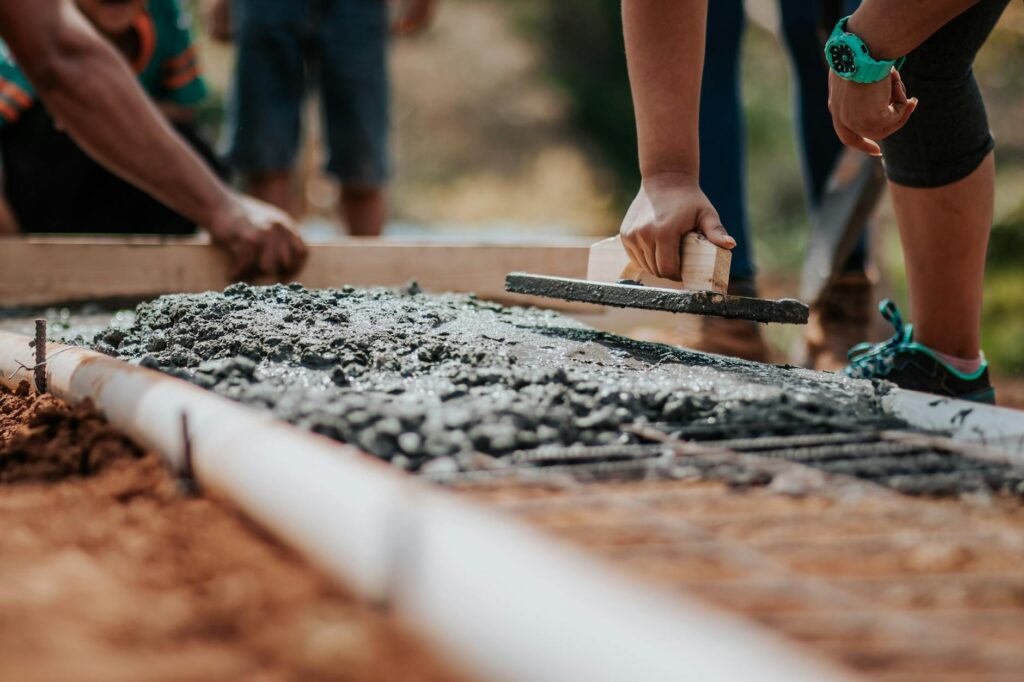Building a strong foundation is crucial for any structure, and for many projects, that means a cement foundation. Whether you’re building a house, a shed, or a patio, understanding the process is key to success. This guide will walk you through the essential steps involved in creating a durable and reliable cement foundation.
Planning and Preparation
Before you even think about mixing cement, careful planning is essential. This includes obtaining the necessary permits, surveying your land to ensure a level base, and designing your foundation to meet your specific needs and local building codes. Consider factors like soil type and drainage. This resource offers valuable insights into soil analysis.
Excavation and Site Preparation
Once your plans are finalized, it’s time to excavate. This involves digging a hole to the exact dimensions of your foundation, ensuring it’s level and free of debris. Proper excavation is critical for a stable foundation. You might need to bring in equipment depending on the scale of your project. 
Formwork Construction
Next, you’ll construct formwork, the temporary structure that holds the wet cement in place until it sets. This usually involves using plywood or other suitable material to create the shape of your foundation. Precise formwork is key to ensuring a neat and level finish. Learn more about formwork techniques.
Reinforcement
Adding reinforcement, such as rebar (steel reinforcing bars), significantly strengthens your cement foundation, increasing its resistance to cracking and shifting. The amount and placement of rebar will depend on the size and intended load of your structure. [IMAGE_2_HERE]
Pouring the Cement
Mixing and pouring the cement is a crucial step. You’ll need to follow the manufacturer’s instructions precisely to ensure proper consistency. Use a wheelbarrow or concrete pump to pour the cement evenly into the formwork. Vibrating the cement as you pour helps eliminate air pockets and ensures a dense, strong foundation. Check out this video for a visual guide.
Curing the Cement
After pouring, the cement needs time to cure, which involves maintaining the right moisture and temperature for optimal strength development. This may involve covering the foundation with plastic sheeting or regularly watering it. Proper curing is essential for a long-lasting foundation. The curing time will depend on the type of cement used and weather conditions.
Finishing Touches
Once the cement has cured, you can remove the formwork and do any necessary finishing. This might include applying a sealant to protect the foundation from moisture damage or further leveling. [IMAGE_3_HERE]
Backfilling and Compaction
The final step is backfilling the excavated area around the foundation with soil, compacting it to prevent settling. Proper compaction is vital to ensure the stability of the entire structure. This article discusses soil compaction techniques in detail.
Creating a solid cement foundation requires careful planning and execution. By following these steps and paying attention to detail, you can ensure a strong and stable base for your project. Remember to always prioritize safety and consider consulting with professionals when needed. Read more about foundation inspections.
Frequently Asked Questions
What type of cement should I use for my foundation? The best type of cement will depend on the specific requirements of your project and local climate conditions. Consult with a building supply professional for recommendations.
How long does it take for a cement foundation to cure? Curing time varies depending on factors like weather, type of cement, and foundation size. It typically takes several days to several weeks for a foundation to reach full strength.
How deep should my foundation be? Foundation depth depends on several factors such as soil type, climate, and the size of the structure. Consult local building codes and consider hiring a professional for guidance.
What tools and equipment do I need? You’ll need tools such as shovels, wheelbarrows, measuring tapes, levels, and possibly a concrete mixer or pump, depending on the size of your project.
What are the potential problems associated with poorly constructed foundations? Poorly constructed foundations can lead to structural issues like cracking, settling, and even collapse, potentially causing significant damage and requiring costly repairs.

